Ayodhya City is the birthplace of Lord Rama and is located in Uttar Pradesh, India. and Ayodhya is an ancient city located on the banks of the Sarayu River. The Ayodhya City has a great history and it has been ruled by various kings or dynasties, like Mauryas, Guptas, Mughals, and the British. Ayodhya has a rich cultural heritage and is home to numerous temples and monuments, many dating back to ancient times. It is known for its numerous ancient temples, including the Hanuman Garhi temple, the Kanak Bhawan temple, and the Nageshwarnath temple.
Where is Ayodhya Located?
Ayodhya is an ancient city and birthplace of Lord Rama located in the northern Indian state of Uttar Pradesh. It is located on the banks of the Sarayu River and is about 135 kilometers east of the state capital, Lucknow. Ayodhya is the administrative headquarters of the Ayodhya district, which is a part of the Faizabad division in Uttar Pradesh. The district covers an area of about 2,844 square kilometers. The Ayodhya district is further divided into 8 tehsils and 19 blocks. The major towns in the district besides Ayodhya include Faizabad, Rudauli, and Milkipur.
Where is Ayodhya Ram Mandir

The Ayodhya Ram Mandir is located in the city of Ayodhya in Uttar Pradesh. It is situated at the site which is known as Ram Janmabhoomi, and it is also the birthplace of Lord Rama. The temple is considered to be one of the holiest sites for Hindus and is expected to attract millions of devotees from around the world. Ayodhya is situated on the banks of the Sarayu River, approximately 130 kilometers east of the city of Lucknow, the capital of Uttar Pradesh.
Capital of Ayodhya
Ayodhya was the capital of the Kosala kingdom, which King Dasaratha, the father of Lord Rama, ruled. However, since Ayodhya is now a city in modern-day India, it does not have a separate capital. Instead, it is a part of the Ayodhya district in the state of Uttar Pradesh, and the administrative headquarters of the district is located in the city of Ayodhya itself. The city is governed by a municipal corporation, which is responsible for the local administration and governance of the city.
History of Ayodhya City
Ayodhya is an ancient city and birthplace of Lord Rama located in the northern Indian state of Uttar Pradesh. It is considered one of the seven most sacred cities of Hinduism and is famous for being the birthplace of Lord Rama, a major deity in the Hindu religion. According to Hindu mythology, Ayodhya was founded by Manu, the first human being in Hindu mythology. The city was ruled by various kings, including Dasharatha, the father of Lord Rama.
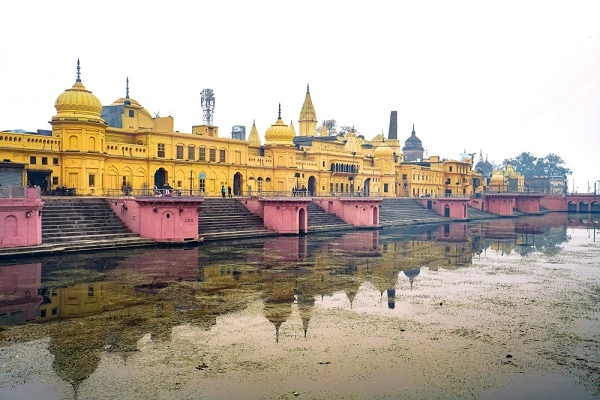
In the 16th century, Ayodhya came under the rule of the Mughal Empire, and it was during this period that the Babri Masjid was built on the place where the Hindu God Lord Rama was born. The mosque was a source of controversy between Hindus and Muslims for many years, with each group claiming ownership of the place.
In recent years, Ayodhya has been the site of a major construction project to build a grand temple dedicated to Lord Rama in Ayodhya, Uttar Pradesh. The temple is expected to be completed in the coming years and will be a major religious and cultural landmark in India.
Ayodhya Old Name
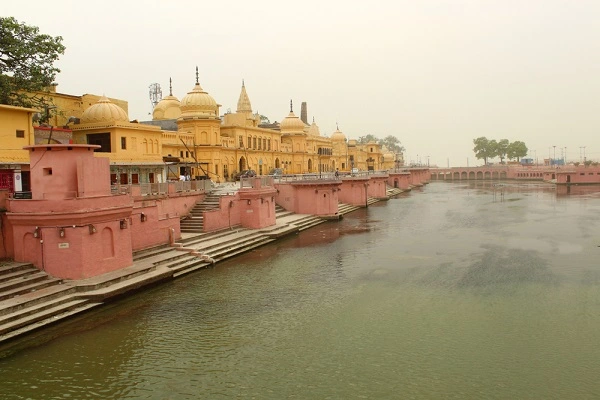
Ayodhya’s old name is Saket. In ancient Hindu texts such as the Ramayana, Ayodhya was described as the capital city of the kingdom of Kosala ruled by King Dasharatha, the father of Lord Rama. The name “Ayodhya” means “unconquerable” or “invincible” in Sanskrit. It is considered to be one of the seven most sacred cities in Hinduism.
How to reach Ayodhya
1. Air:
The nearest airport to Ayodhya is Chaudhary Charan Singh International Airport in Lucknow, which is about 135 km away. You can hire a taxi or take a bus from the airport to reach Ayodhya.
Delhi to Ayodhya Flight
There are no direct flights available from Delhi to Ayodhya. However, you can take a flight from Delhi to Lucknow, which is the nearest airport to Ayodhya, and then take a taxi or bus to reach Ayodhya. The flight time from Delhi to Lucknow is approximately 1 hour and 15 minutes, and the distance between Lucknow and Ayodhya is about 135 km.
2. Train:
Ayodhya Junction: The nearest railway station to Ayodhya is Ayodhya Junction. Ayodhya Junction a railway station located in the city of Ayodhya in Uttar Pradesh. It is one of the major railway stations in the region and serves as an important transportation hub for passengers traveling to and from Ayodhya.
The station is located on the Faizabad-Lucknow line and is well-connected to major cities in India such as Delhi, Mumbai, Kolkata, Chennai, and Bangalore. Several important trains stop at Ayodhya Junction, including the Lucknow Mail, Vaishali Express, and Sabarmati Express.
3. Road:
Ayodhya is well-connected by road to major cities in Uttar Pradesh and other parts of India. You can take a bus or hire a taxi to reach Ayodhya. National Highway 27 passes through Ayodhya, making it easily accessible by road.
Ayodhya Places to Visit
Here is the list of Ayodhya Mandirs or popular places in Ayodhya that you must visit in Ayodhya:
1. Ram Janmabhoomi

The Ram Janmabhoomi Temple, also known as the Ram Mandir, is a temple constructed at the site in Ayodhya where Hindus believe Lord Rama was born. The construction of the Ram Mandir is currently underway, and it is expected to be completed in the near future. The temple is expected to be a major pilgrimage site for Hindus from all over the world.
2. Hanuman Garhi

Hanuman Garhi temple is dedicated to Lord Hanuman and it is believed to be one of the most important Hindu pilgrimage sites in Ayodhya. It is believed that Lord Hanuman lived here during the time of Lord Rama and helped him in his battles against the demon king Ravana. The temple has unique architecture and the temple complex consists of several small temples dedicated to various deities including Lord Rama, Lord Shiva, and Goddess Durga. Hanuman Garhi is visited by a large number of devotees from all over India and around the world. The temple is particularly crowded during the festival of Diwali when it is beautifully decorated with lights and flowers.
3. Nageshwarnath Temple
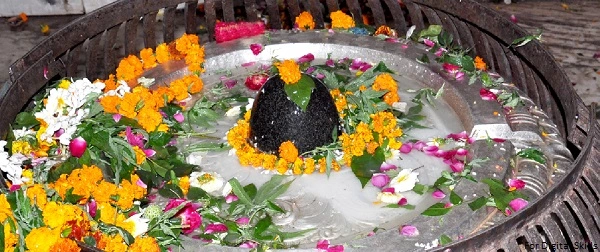
Nageshwarnath Temple is an ancient Hindu temple located in Ayodhya and this temple is dedicated to Lord Shiva. The temple was built by Lord Rama’s younger brother, Bharata, during the time of Lord Rama’s exile. It is believed that Lord Rama himself worshipped at this temple after his return to Ayodhya. The temple has a unique architecture with a high shikhar (spire) and a large courtyard. This temple is also dedicated to other deities such as Lord Ganesha, Goddess Durga, and Lord Hanuman. The temple is famous for its annual festival, Naga Panchami, which is celebrated with great enthusiasm and devotion.
4. Treta Ka Thakur
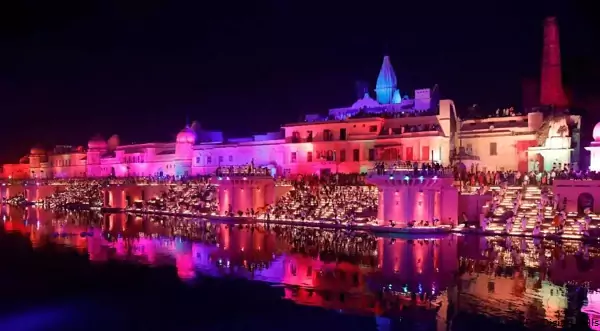
Treta Ka Thakur is an ancient temple located in Ayodhya. The temple is dedicated to Lord Rama. According to Hindu mythology, Treta Yuga is the second yuga (age) of the four yugas mentioned in the Hindu scriptures. It is believed that Lord Rama was born during Treta Yuga and that he lived and ruled over Ayodhya during that time. The temple is believed to have been built during the time of Lord Rama’s reign and is considered one of the oldest temples in Ayodhya. The temple is open to visitors throughout the day, and entry is free.
5. Chotti Devakali Mandir

Chotti Devkali Mandir is an ancient Hindu temple located in Ayodhya. The temple is dedicated to Devkali. According to Hindu mythology, the temple has a connection with the Ramayana as it is believed that Lord Rama’s wife, Sita, used to visit this temple during her exile in the forest and this temple is also believed to have been visited by Lord Rama himself during his time in Ayodhya. The temple has simple yet beautiful architecture, with a small courtyard and a sanctum sanctorum. The temple is popular among devotees, who come here to offer their prayers and seek blessings from Devkali.
6. Shri Kale Ram Temple

Shri Kale Ram Temple is a famous Hindu temple located in Ayodhya. The temple is dedicated to Lord Rama, who is worshipped here in the form of a black-colored idol known as Kale Ram. According to locals, the temple was built during the reign of the Gupta dynasty, which ruled over India from the 3rd to the 6th century AD. This temple is believed to have been destroyed and rebuilt several times over the centuries, and its present-day structure dates back to the 18th century. The temple has unique architecture with a tall shikhar (spire) and a large courtyard. The temple also has several other small shrines dedicated to other deities such as Lord Hanuman and Lord Shiva.
7. Kanak Bhawan
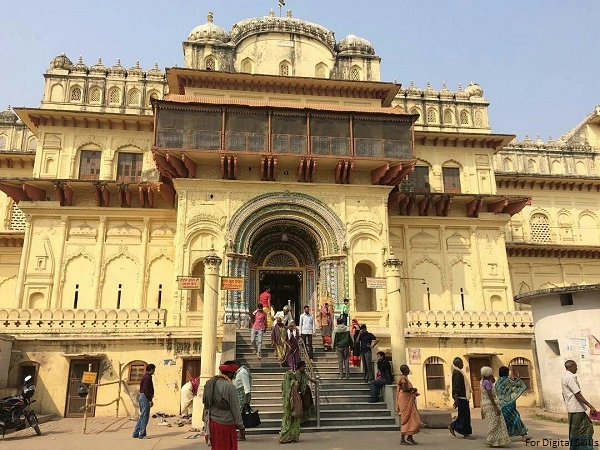
Kanak Bhawan is a Hindu temple dedicated to Lord Rama and his wife Sita, located in Ayodhya. A Kanak Bhawan temple has been rebuilt several times over the centuries and its present-day structure dates back to the 19th century the temple has a unique architecture with a combination of Rajasthani and South Indian styles. This temple is also dedicated to other deities such as Lord Hanuman and Lord Shiva. The temple is particularly famous for its elaborate and ornate decorations, which include intricate carvings, paintings, and sculptures. The temple is open to visitors throughout the day, and entry is free.
8. Tulsi Smarak Bhawan
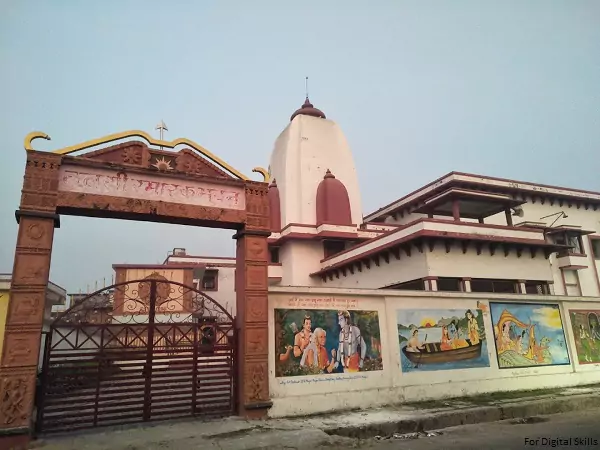
Tulsi Smarak Bhawan is a museum located in Ayodhya, Uttar Pradesh, India, dedicated to the memory of the famous Hindi poet, novelist, and philosopher, Goswami Tulsidas. The museum is situated in the vicinity of the Ram Janmabhoomi temple and is built on a 25-acre of land. The Tulsi Smarak Bhawan Museum is built in the style of a temple and is a three-story building. The museum also showcases several paintings and sculptures.
9. Guptar Ghat

Guptar Ghat is a significant spot in Ayodhya and it is situated on the banks of the Sarayu River. According to Hindu mythology, Lord Rama, along with his brothers Lakshmana, Bharata, and Shatrughna, took a dip in the river at Guptar Ghat during their exile period in the forest. It is also believed that Lord Rama went underground at Guptar Ghat to meet Lord Shiva and seek his blessings before his battle with Ravana, as described in the Hindu epic Ramayana. Due to its religious and cultural significance, Guptar Ghat attracts a large number of devotees and tourists throughout the year.
10. Mani Parbat
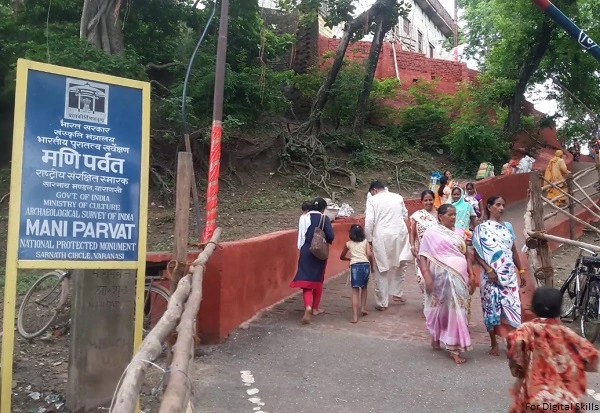
Mani Parbat is a sacred hill located in Ayodhya, Uttar Pradesh, India. It is believed to be one of the five hills that were present in the ancient city of Ayodhya. According to Hindu mythology, it is believed that Lord Hanuman carried a mountain named Dronagiri to Ayodhya to obtain the Sanjeevani herb to revive Lord Rama’s brother, Lakshmana. While carrying the mountain, a small piece of it fell and became the Mani Parbat.
11. Gulab Bari
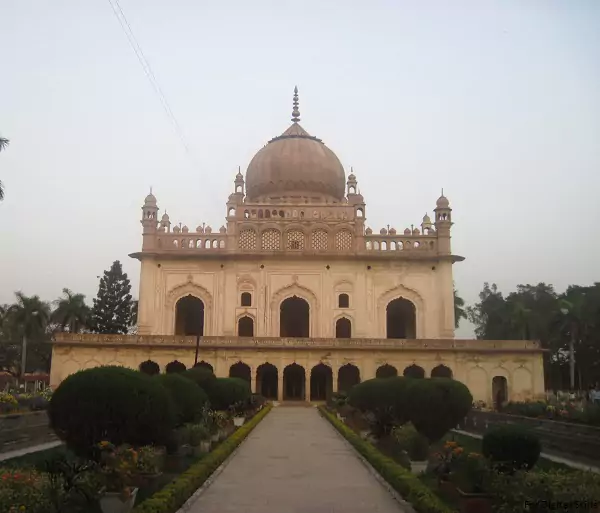
Gulab Bari is a historic building located in Ayodhya, Uttar Pradesh, India. It is also known as the Rose Garden Palace or Tomb of Nawab Shuja-ud-Daula. Gulab Bari is a popular tourist destination in Ayodhya and is maintained by the Archaeological Survey of India. Visitors can explore the historic complex and learn about the fascinating history of the Nawabs of Awadh.
